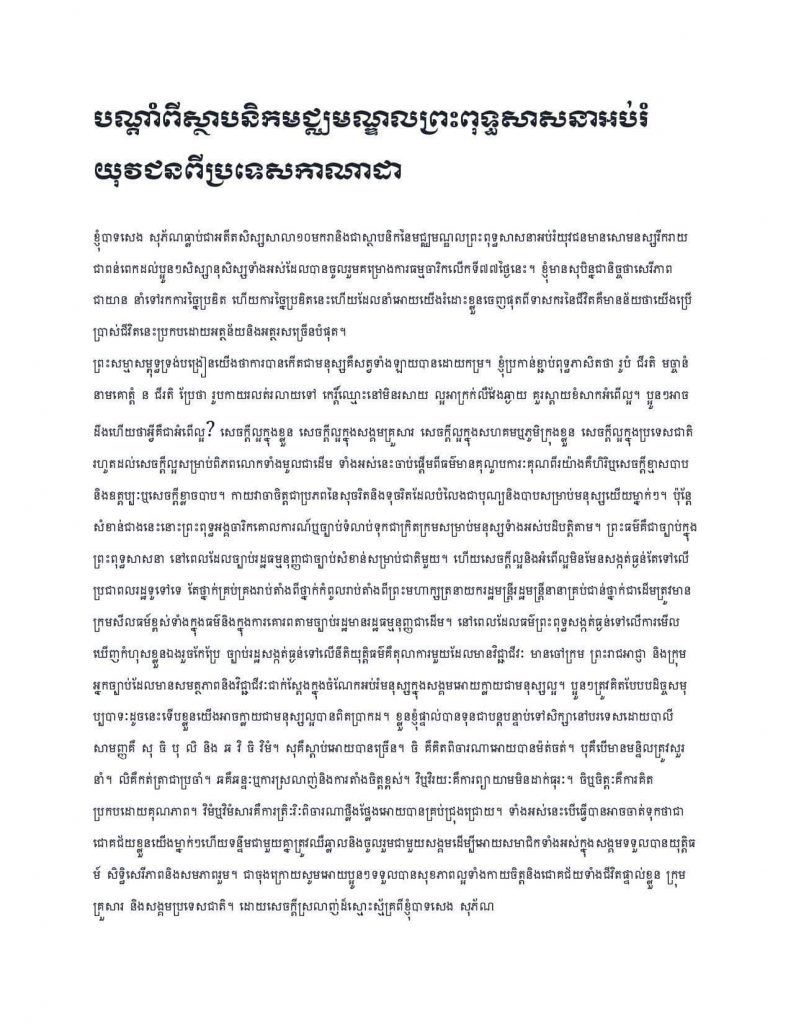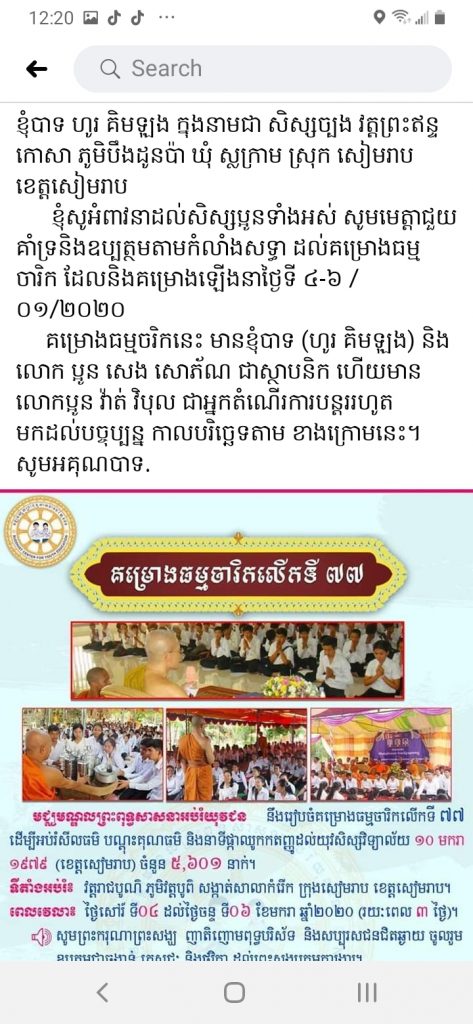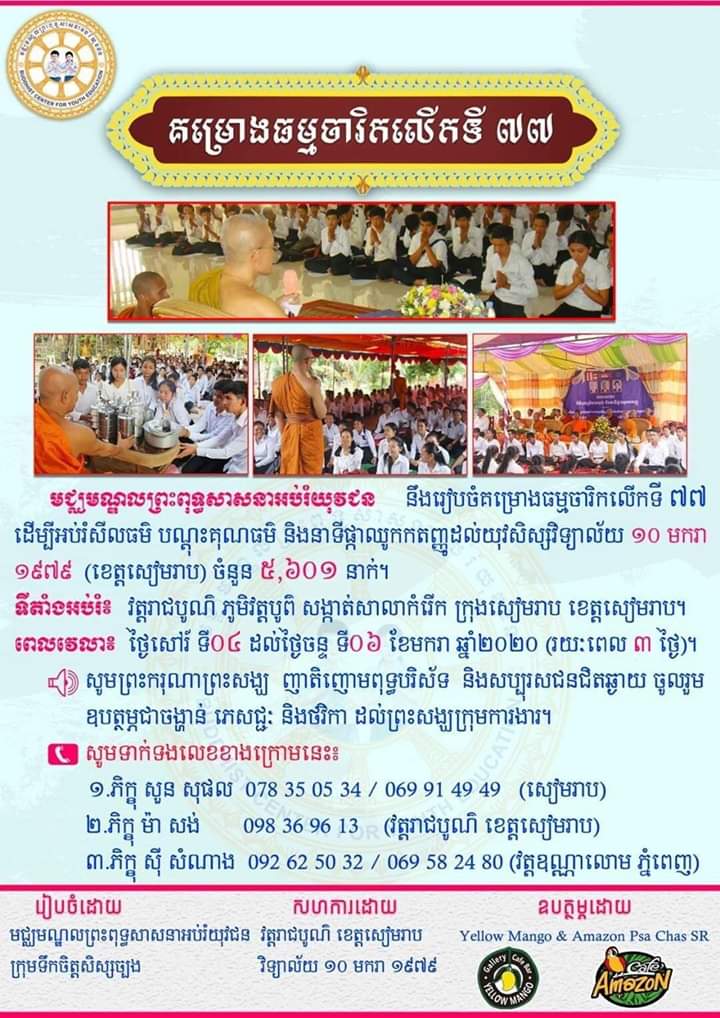Comment: អានចំណងជើងក៏យើងដឹងច្បាស់ថាលោកហ៊ុនសែនឈ្នះរហូតតែសម្រាប់ប្រយោជន៌និងអំណាចគាត់ បក្សពួក និងក្រុមគ្រួសារតែប៉ុន្តែ។ អ្នកនិព្វន្ធដែលប្រើវោហាសាស្ត្រដក់ជាប់អារម្មណ៌នេះបានបញ្ជាក់ដោយខ្លឹមសារខ្លីតែមានអត្ថន័យជក់ចិត្តនោះគឺទីបំផុតលោកហ៊ុនសែនអាចធ្វើអ្វីគ្រប់បែបយ៉ាងអោយតែរក្សាអំណាចបានរួមទាំងតំលៃជាតិទាំងមូលត្រូវបានលក់ដូរឬពុះជ្រៀកយ៉ាងណាក៏ដោយ។
The Longest Failed Regime in the World
Original Source for Academic Reference: LARB, By Charles Dunst
JANUARY 6, 2020

HUN SEN’S REIGN was never supposed to last this long. The Vietnamese Communists who in 1979 installed him, then a tongue-tied mid-20s ex–Khmer Rouge commander, as their puppet foreign minister certainly did not expect this. Neither did the international community.
Sen has defied all expectations, emerging from the Mekong River–hugging lowlands of Kampong Cham to rule Cambodia as prime minister, first in the Vietnamese-controlled People’s Republic of Kampuchea, then under the United Nations’s democracy-focused eye, later as the country’s co-premier, then again on his own, and now still solo, but increasingly under China’s influence. Throughout these near-tectonic shifts, one thing — Sen’s self-interest — has remained constant.
January 14, 2020, will mark 35 years since he came to power. But Sen, who’s only 67, has no apparent intention of stepping down, although he seems to be priming his son Hun Manet for succession. Meanwhile, his autocratic crackdowns have intensified, and the Cambodian condition remains dire: Corruption is endemic, and some 80 percent of Cambodians survive on subsistence farming. The kleptocrat may now wear Cambodian rather than French colonial colors, but for the country’s rural majority life is distressingly similar to its previous analogues.
Still, Sen’s self-crafted legacy hinges mainly on a narrative of deliverance. He claims to have ended Cambodia’s Khmer Rouge period and brought about a newfound era of peace, stability, and marginal development. “Your contemporary poverty and stability,” Sen’s narrative seems to tell Cambodians, “is better than the state of war in which you’d be without me.” But his true legacy is of autocracy, of fear and corruption, and, ultimately, of contempt for and betrayal of those Cambodians who he has long failed to serve.
¤
Sen spent his early years in Kampong Cham, but by the mid-1960s his parents had sent him, then either 12 or 13, to live and study at a pagoda in the Cambodian capital of Phnom Penh. Autocratic and self-indulgent Cambodian leader Prince Norodom Sihanouk ordered the public execution of alleged traitors in 1969, and anti-Sihanouk sentiment took hold of some of Sen’s friends; at least one was arrested. Fearing his own potential detainment, Sen fled to Kampong Cham, settling in Vietnam-bordering district of Memot, according to 2015 Human Rights Watch report “30 Years of Hun Sen.”
The United States was at this point entrenched in the Vietnam War and drowning Cambodia, officially neutral but allowing North Vietnam to use its territory, in more bombs than the Allies dropped on the Axis during the entirety of World War II. This bombardment killed at least 200,000 Cambodians and helped the Khmer Rouge recruit followers. The ultra-nationalist Maoists would eventually kill about two million people, a quarter of Cambodia’s population. But they gained popular support by promising to stop the bombing.
Sen bore witness to this explosive rain, instilling in him what he says was anti-American sentiment. It was this anger, coupled with a standard Cambodian respect for Sihanouk, that seems to have brought him, like countless others, to join the Khmer Rouge. Scholar Ben Kiernan asserted in the late 1990s than Sen was by 16 already a courier for them.
Then, on March 18, 1970, US-favored General Lon Nol deposed Sihanouk, transforming Cambodia from a neutral to an American-aligned state and forcing the monarch into Chinese and North Korean exile. Stung by betrayal, Sihanouk agreed to lead the Khmer Rouge’s resistance, urging people over the radio to join their insurgency. He also appeared in propaganda films and booklets that “helped the Communists recruit peasants in Cambodia and gave respectability to their cause,” The New York Times reported. The paper of record charitably noted that “[i]n the end, King Sihanouk helped bring Pol Pot to power.”
The New Yorker’s Philip Gourevitch was later less forgiving: Sihanouk’s “name became the Khmer Rouge’s greatest recruitment tool, and the most extreme Communist movement in history swept to power on royal coattails.” By the end of April, the teenaged Sen was a Khmer Rouge platoon leader, and in 1971 he began to rise through their ranks, putting him well within its political and military structures, per Human Rights Watch. But in April 1975, he was wounded by shrapnel, leaving him unconscious for about a week — and without a left eye. While still recovering, Sen was promoted; he rejoined his regiment in Memot in May.
Around this time, Cambodia’s Muslim Cham communities began to oppose the Khmer Rouge. The guerrillas detested the Cham and Vietnamese living in Cambodia, viewing both as having no place in their agrarian Khmer utopia. They rounded up Chams, forced them to eat pork, banned their traditional language, and burned their Qur’ans.
In the fall of 1975, two eastern Cham villages rose up; the Khmer Rouge cracked down viciously in what amounted to My Lai–style massacres. Hun Sen was at the time a commander in those parts of Cambodia, but he has repeatedly denied his regiment’s involvement. Numerous other accounts contradict this though, implicating Sen’s unit, Battalion 55, in certain attacks. Brad Adams, executive director of Human Rights Watch’s Asia division, wrote in 2015:
According to one testimony by a former Sector 21 regiment combatant, after the unrest broke out and had already spread to Svay Khleang, Battalion 55 was dispatched from the border to suppress it. This is corroborated by the account of a Krauch Chhmar resident who observed Sector 21 troops moving into battle, saying that the units that suppressed the Cham unrest in 1975 were Krauch Chhmar District Military forces, based at the district seat on the Mekong, and Battalion 55[.] […] The attackers bombarded the village with 60 and 82 millimeter mortar rounds, while also firing on villagers with assault rifles and rocket-propelled grenades, killing hundreds of villagers.
Cambodia’s UN-backed Khmer Rouge tribunal, whose mandate extends only to the group’s senior-level officials — which Sen was not — has for years crawled along, delivering justice at a snail-like pace, largely because of Sen’s opposition to its continued operation. But in November 2018, it finally ruled Khmer Rouge crimes against Cham and Vietnamese to constitute genocide.
So I sat, in the sterile courtroom on Phnom Penh’s coral-dusted outskirts, surrounded by Cham survivors and their descendants, delicately capped men and headscarved women, as the tribunal made its ruling, prompting tears to flow — and implicating, at least by association, their prime minister in the worst of all crimes.
“How far Mr. Hun Sen participated in these brutalities is not known,” Steven Erlanger once reported for The New York Times. “[B]ut it is hard to imagine that he stood aside.”
¤
Hun Sen says that by 1976 he began to disagree with certain Khmer Rouge practices, namely their attacks against Vietnamese border villages. The Communists, who took control of Cambodia in April 1975, were also pursuing mass internal purges. So, in June, Sen because of his disagreements (and probably fearing purging) defected to Vietnam, embarking upon a new chapter of opportunism and puppetry.
By December 1978, Hanoi had become fed up with the Khmer Rouge’s Vietnamese massacres and invaded Cambodia to oust their former allies. Sen returned with a force of exiled Cambodians he’d formed to assist Vietnam (“Cambodia’s historical archenemy,” as Anthony Bourdain once wrote). By January 1979, Vietnam had forced the Khmer Rouge back into the jungles from which they came, and from where they would wage war for over a decade.
Vietnam after plundering Phnom Penh announced the names of those who would lead its puppet Cambodian government to be known as the People’s Republic of Kampuchea (PRK). This list, The New York Times reported, comprised an array of “unknown” Cambodian defectors including Hun Sen, the 26- or 27-year-old who would be the foreign affairs minister.
The PRK was a police state of which Sen, following the arrest and death of his predecessors, became prime minister on January 14, 1985. He was 32, and in control of the PRK’s armed forces and security units, which he wielded ruthlessly to imprison thousands of political opponents who were then tortured using “electric shocks, hot irons and near-suffocation with plastic bags,” according to a 1987 Amnesty International report. Meanwhile, food was scant, malnutrition widespread, and infrastructure ruined; war with the Khmer Rouge continued; Vietnam’s presence remained dominant.
Sen, there only by the grace of Hanoi, was Vietnam’s malleable marionette.
Continue reading



